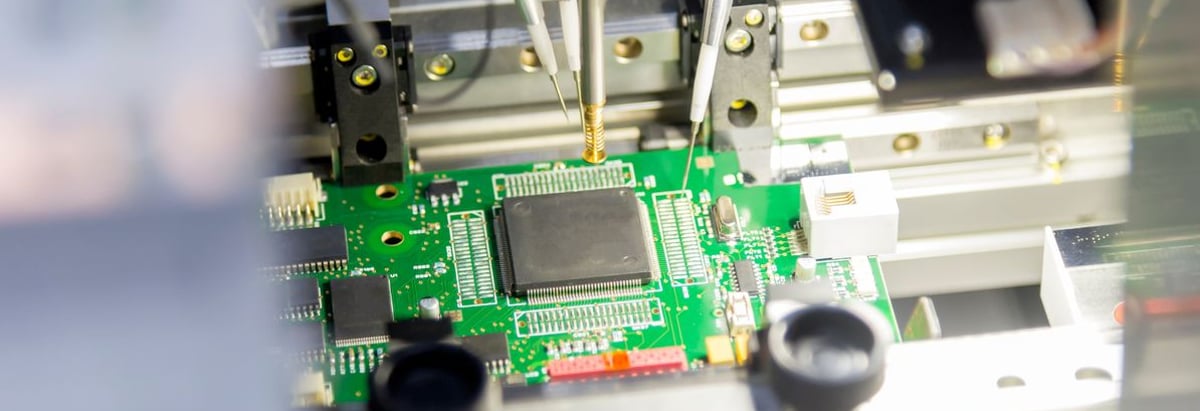
Legendary fund manager Li Lu (who Charlie Munger backed) once said, 'The biggest investment risk is not the volatility of prices, but whether you will suffer a permanent loss of capital.' When we think about how risky a company is, we always like to look at its use of debt, since debt overload can lead to ruin. As with many other companies Innox Corporation (KOSDAQ:088390) makes use of debt. But is this debt a concern to shareholders?
When Is Debt Dangerous?
Debt and other liabilities become risky for a business when it cannot easily fulfill those obligations, either with free cash flow or by raising capital at an attractive price. If things get really bad, the lenders can take control of the business. However, a more common (but still painful) scenario is that it has to raise new equity capital at a low price, thus permanently diluting shareholders. Of course, plenty of companies use debt to fund growth, without any negative consequences. When we examine debt levels, we first consider both cash and debt levels, together.
See our latest analysis for Innox
How Much Debt Does Innox Carry?
You can click the graphic below for the historical numbers, but it shows that Innox had ₩50.5b of debt in September 2024, down from ₩53.2b, one year before. However, it does have ₩61.7b in cash offsetting this, leading to net cash of ₩11.2b.

How Healthy Is Innox's Balance Sheet?
We can see from the most recent balance sheet that Innox had liabilities of ₩47.9b falling due within a year, and liabilities of ₩50.2b due beyond that. On the other hand, it had cash of ₩61.7b and ₩5.67b worth of receivables due within a year. So it has liabilities totalling ₩30.8b more than its cash and near-term receivables, combined.
While this might seem like a lot, it is not so bad since Innox has a market capitalization of ₩88.1b, and so it could probably strengthen its balance sheet by raising capital if it needed to. But we definitely want to keep our eyes open to indications that its debt is bringing too much risk. Despite its noteworthy liabilities, Innox boasts net cash, so it's fair to say it does not have a heavy debt load! There's no doubt that we learn most about debt from the balance sheet. But you can't view debt in total isolation; since Innox will need earnings to service that debt. So when considering debt, it's definitely worth looking at the earnings trend. Click here for an interactive snapshot.
Over 12 months, Innox made a loss at the EBIT level, and saw its revenue drop to ₩45b, which is a fall of 29%. That makes us nervous, to say the least.
So How Risky Is Innox?
By their very nature companies that are losing money are more risky than those with a long history of profitability. And the fact is that over the last twelve months Innox lost money at the earnings before interest and tax (EBIT) line. And over the same period it saw negative free cash outflow of ₩8.1b and booked a ₩17b accounting loss. With only ₩11.2b on the balance sheet, it would appear that its going to need to raise capital again soon. Summing up, we're a little skeptical of this one, as it seems fairly risky in the absence of free cashflow. When analysing debt levels, the balance sheet is the obvious place to start. However, not all investment risk resides within the balance sheet - far from it. Be aware that Innox is showing 1 warning sign in our investment analysis , you should know about...
If, after all that, you're more interested in a fast growing company with a rock-solid balance sheet, then check out our list of net cash growth stocks without delay.
New: AI Stock Screener & Alerts
Our new AI Stock Screener scans the market every day to uncover opportunities.
• Dividend Powerhouses (3%+ Yield)
• Undervalued Small Caps with Insider Buying
• High growth Tech and AI Companies
Or build your own from over 50 metrics.
Have feedback on this article? Concerned about the content? Get in touch with us directly. Alternatively, email editorial-team (at) simplywallst.com.
This article by Simply Wall St is general in nature. We provide commentary based on historical data and analyst forecasts only using an unbiased methodology and our articles are not intended to be financial advice. It does not constitute a recommendation to buy or sell any stock, and does not take account of your objectives, or your financial situation. We aim to bring you long-term focused analysis driven by fundamental data. Note that our analysis may not factor in the latest price-sensitive company announcements or qualitative material. Simply Wall St has no position in any stocks mentioned.
About KOSDAQ:A088390
Adequate balance sheet and slightly overvalued.
Market Insights
Community Narratives



